A Handy Guide to Volcano Vocab
Laze, vog, lava bomb—we help you decipher what geologists are actually talking about
/https://tf-cmsv2-smithsonianmag-media.s3.amazonaws.com/filer/3a/e9/3ae9abea-fe27-496d-9b51-e1eb3f8d6de7/pahoeheaa.jpg)
On May 3rd, incandescent lava began oozing from Hawaii's Kīlauea volcano, forming glowing streams of molten rock. Activity intensified last week when steam-powered explosive eruptions burst from its summit crater, sending spectacular plumes of ash, gas and steam thousands of feet into the sky. In recent days, lava fountains hundreds of feet tall began spurting from fissures, putting Earth’s fiery power on full display.
An eruption of volcano news soon followed, bringing with it an array of near-indecipherable geologic jargon. Laze, vog, lava bomb—they sound like words made up for Scrabble scores. To help you find your way through the onslaught, we asked Janine Krippner, a volcanologist and postdoctoral researcher researcher at Concord University, to weigh in on their meanings.
Laze
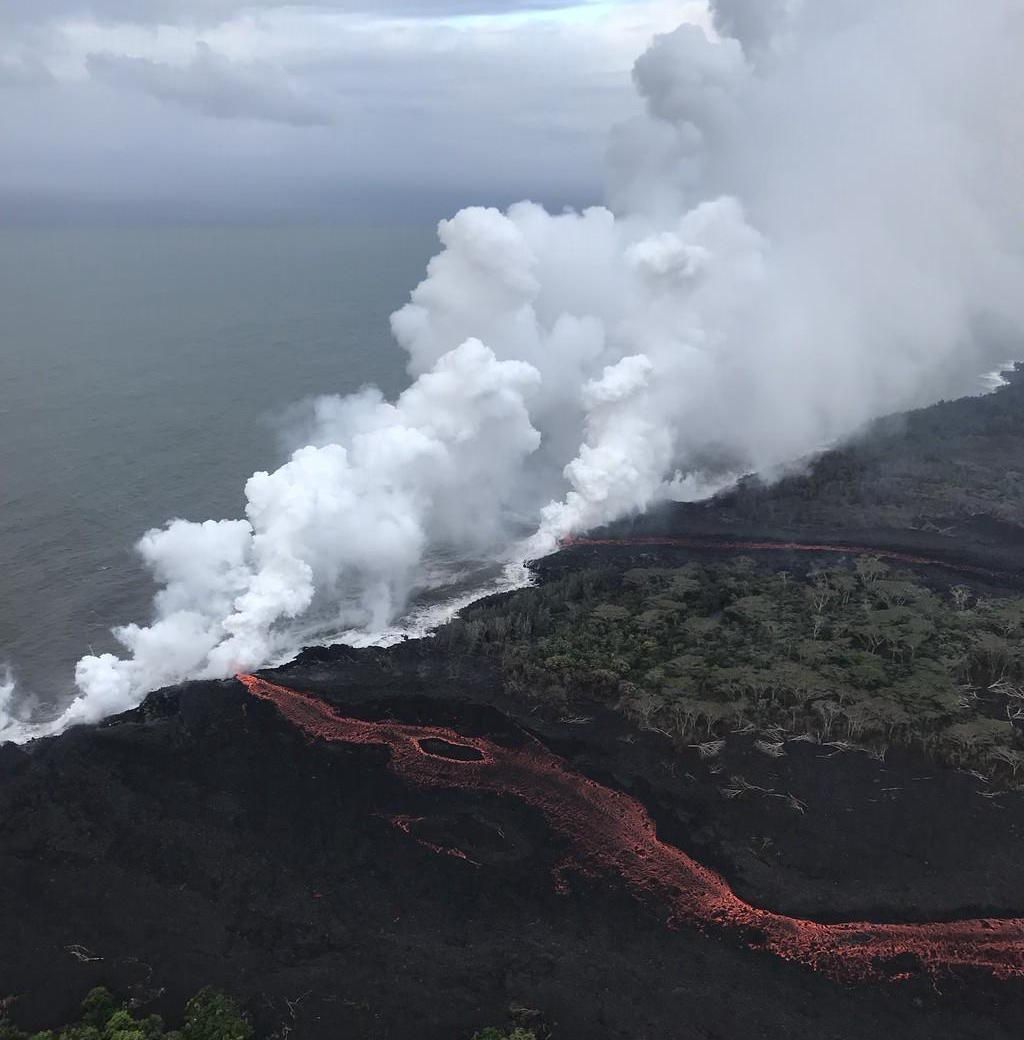
As the glowing stream of lava flowed into the ocean, a new term began dominating headlines: laze. A combination between the terms "lava" and "haze," laze is created when fiery lava meets cold sea water. When this happens, water boils away, and the resulting reactions produce a noxious plume of steam, hydrochloric acid, and shards of volcanic glass. As Krippner explains, the glass shards forms thanks to the rapid cooling of the lava combined with the sudden expansion of the water as steam, which produces explosions that blow the cooling lava apart.
Breathing laze plumes can be hazardous, causing a range of effects that include lung damage and irritation of the eyes and skin. Fortunately, it’s "very localized" and "dissipates quickly," according to the USGS Facebook page.
Vog
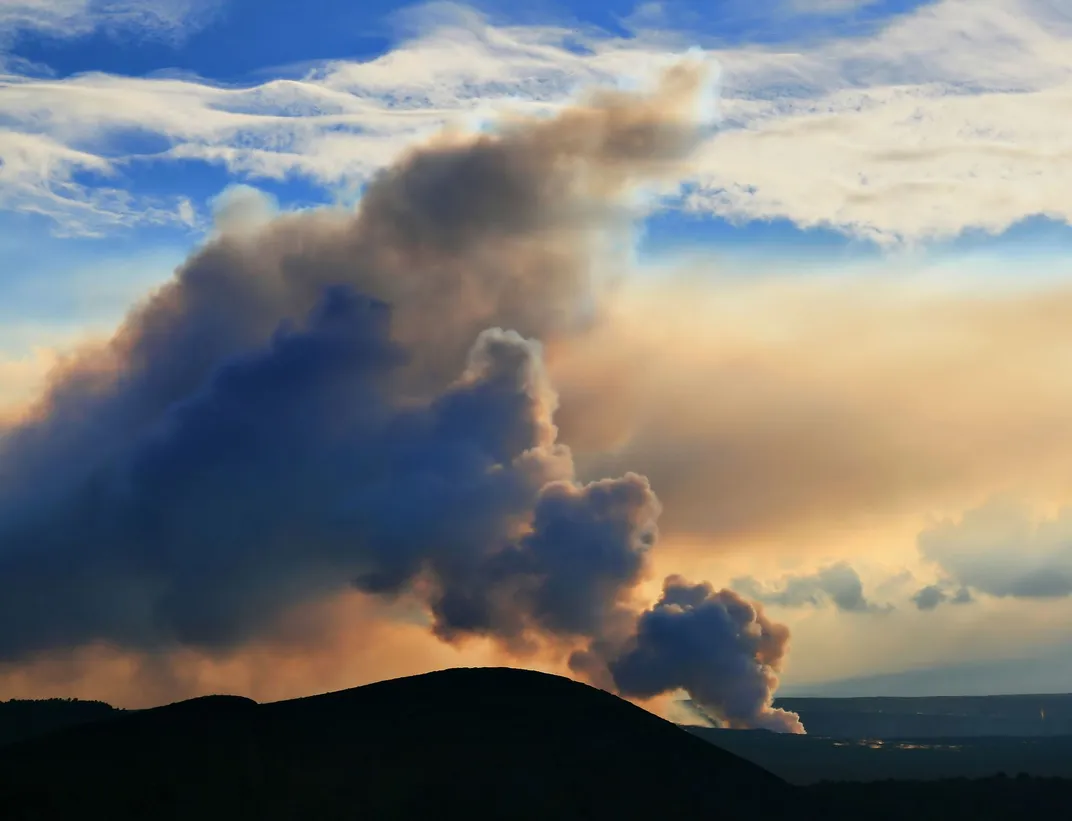
Like laze, this portmanteau sews together two words—volcano and smog—to describe the acidic haze that commonly forms due to volcanic emissions. Sulfur dioxide, which effervesces from active volcanic vents and craters, reacts with sunlight, moisture, particulate and oxygen to produce clouds of fine particles. Also like laze, breathing vog can be hazardous to your health, and Hawaii officials and the Joint Task Force 5-0 are keeping a close watch on local air quality.
Vog can produce acid rain, but its corrosiveness pales in comparison to the skin-melting properties of concentrated acid. Over time, acid rain can pose problems for vegetation and structures, Krippner says, but it’s nothing to fear in the short term.
Magma vs. Lava
These two are commonly misused, so we wanted to clarify. Magma is molten rock within the Earth. If it reaches the surface, it's called lava. Krippner has an easy way to keep it straight. Just remember: "The magma rose and then the lava erupted."
Lava Bomb
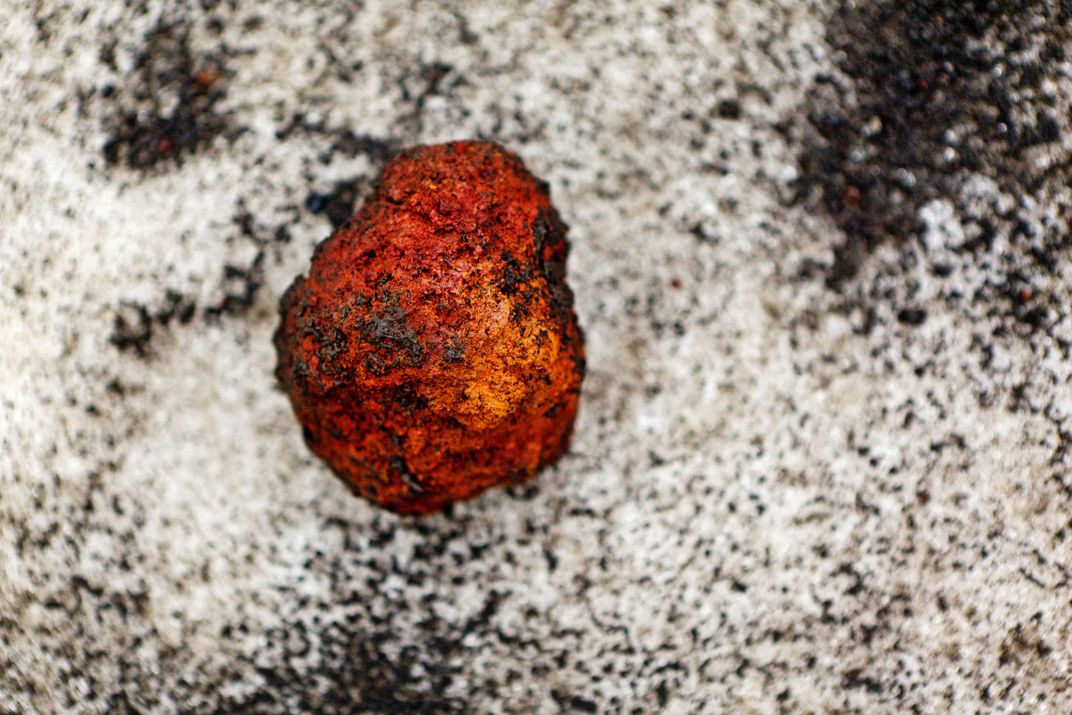
No, you don't need to worry about these blobs of molten rock detonating like grenades (though you still won't want to get hit by one). The term simply refers to any fluid bits of lava larger than 2.5 inches in diameter—roughly the size of a tennis ball—that rocket from a volcano during an explosive eruption. If solid, these projectiles are known as blocks.
As they fly through the air, the blobs can often take on an aerodynamic shape like a football. But if they're still pretty hot and squishy when they land, they often splat on the ground to form what's known as (at least in New Zealand) a cowpat, says Krippner.
Spatter
This term similarly refers to fluid volcanic projectiles. As Krippner explains, there's a little bit of an overlap between the definitions of spatter and lava bombs, but the former usually refers to liquid material flung out immediately around the vent. "Because it's still so hot and fluid, it lands in a pile and it solidifies into one big rock formation," she says. Over time, spatter can build up, welding to form walls or barriers of rock known as spatter ramparts.
Ash
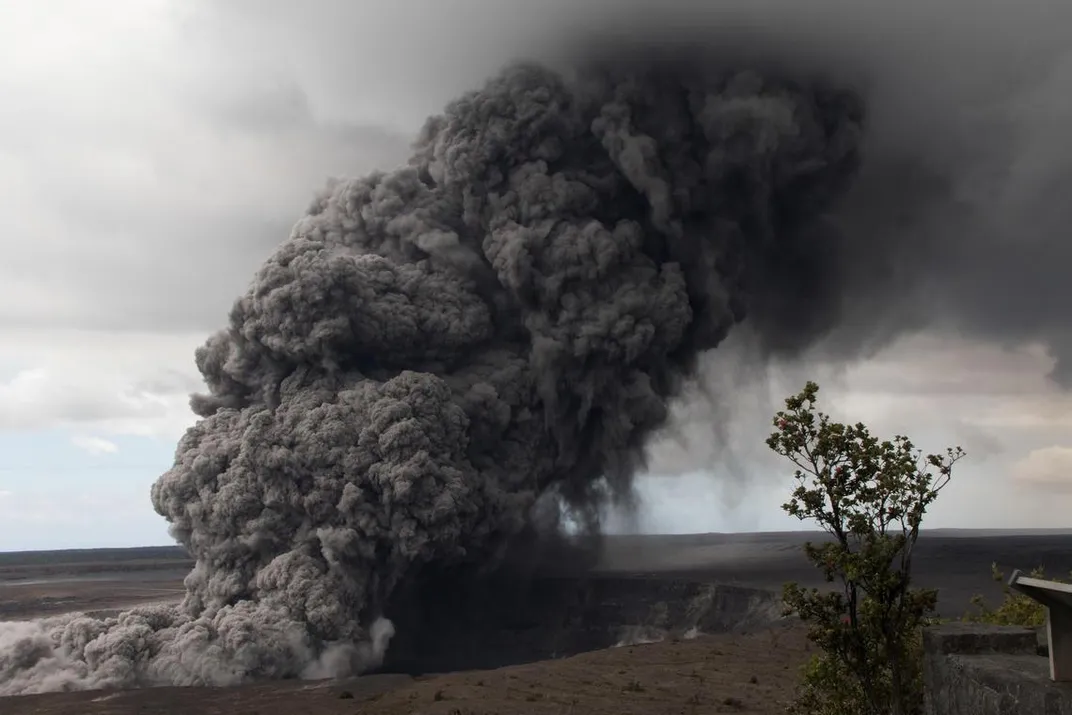
You may think you know what ash means, but bear with us. Volcanic ash is made up of tiny, prickly fragments of rocks, mineral crystals, and glass less than 2 mm in across—a far cry from the fluffy bits of charred wood or paper left over from a campfire. Instead, "it's kind of like sharp sand falling from the sky," says Krippner.
Volcanic ash forms thanks to the expansion of gases within the rising magma. As it erupts from the volcano, the force shatters the molten rocks, flinging the tiny bits of material sky high. For large magmatic eruptions—not phreatic eruptions like Kīlauea, which produce sparse amounts of ash (see below)—the build up of ash is a challenge to remove, Krippner says: "It's like shoveling heavy sand."
Tephra
Ash and lava bombs are both types of tephra, which is a term that generally encompasses all volcanic projectiles. Any tephra larger than ash but smaller than bombs (2 mm to 64 mm) are known as Lapilli.
Pele's Hair
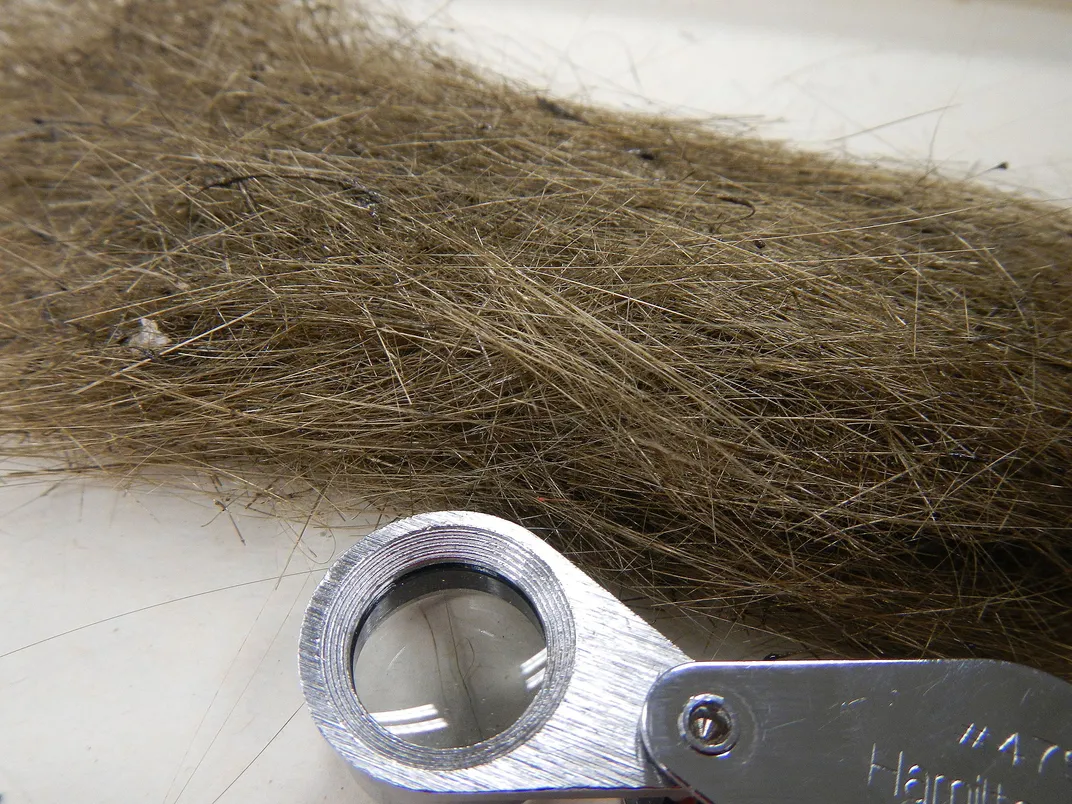
Named after Hawaii’s goddess of volcanoes, this type of lava is composed of hair-thin fibers of volcanic glass. It forms when clots of lava fly apart in the air, stretching like hot taffy. Wind often picks up the resulting light fibers, carrying them away from the vents. Sometimes droplets of magma at the ends of Pele’s Hair harden mid-air, forming what's known as Pele’s Tears.
Pāhoehoe vs. ‘A‘ā
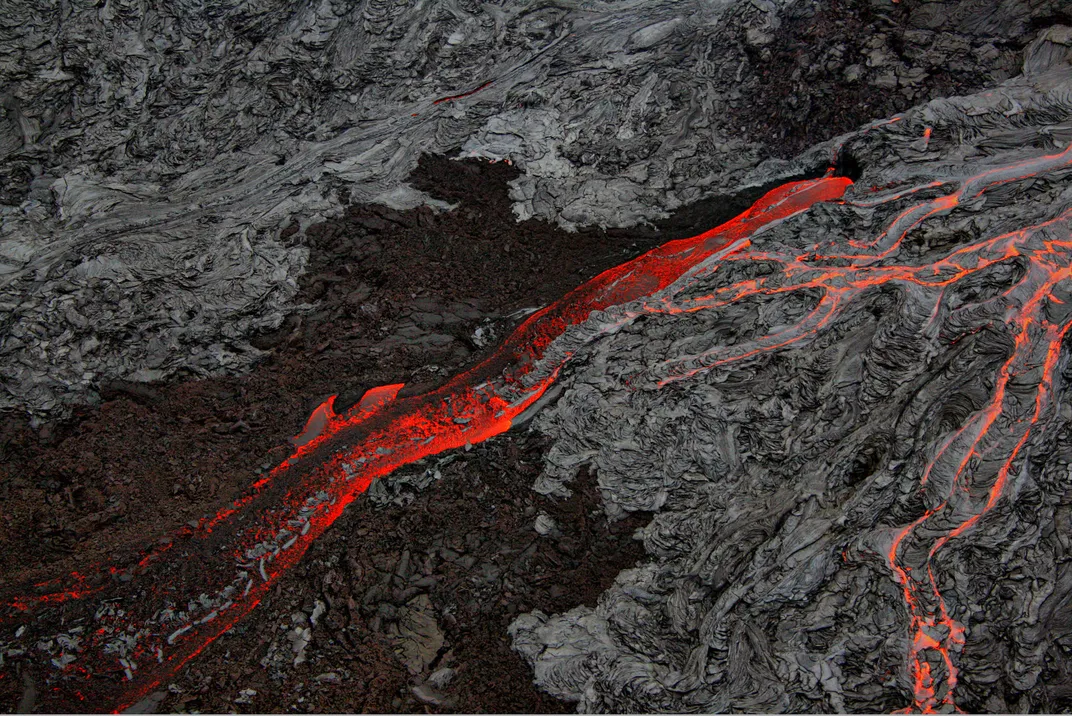
These terms describe different types of lava—and sometimes both can happen at different points in the same flow, says Krippner. Pāhoehoe forms when the lava is hot and fluid, creating an undulating expanse of ropey rocks. ‘A‘ā flows, however, are much more viscous. They have a rough, jagged surface, which tumbles over itself as the front advances, fracturing into more pieces. The surface of the lava cools in both, but depending on its viscosity, the resulting rocks are very different.
Magmatic vs. Phreatic eruption
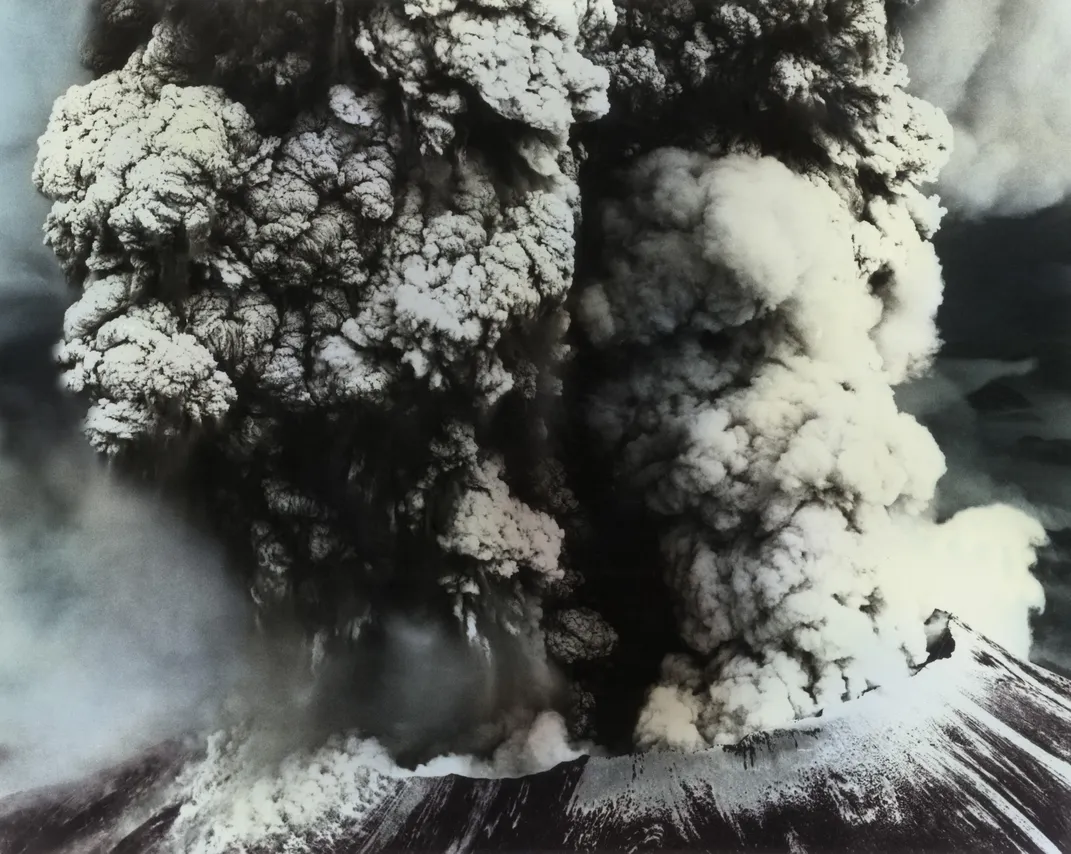
You’ve seen both of these in the news lately, so allow us to explain the difference. Magmatic eruptions are driven by magma—which, as you'll recall, is lava before it reaches the Earth’s surface—rapidly rising from below the volcano. With enough magma-driven oomph, these types of eruptions can be huge, producing voluminous plumes dense with ash and can last for hours, days, weeks or even (intermittently) months or years, says Krippner.
Phreatic eruptions like those of Kīlauea, on the other hand are the result of a buildup of pressure due to gas and steam. There is generally little warning of the event, Krippner says. And though still dangerous, they're usually much smaller, produce less ash, and are shorter lived than magmatic eruptions.
Pyroclastic flows
Pyroclastic flows are avalanches of searing hot rocks, ash and gas that zip down volcano sides up to 450 miles per hour, according to the USGS. These aren't currently a concern for Kīlauea, but this fast and deadly type of flow can happen at many other volcanoes, including Guatemala's Fuego volcano and the Philippine's Mayon volcano. (In fact, the build up of material from pyroclastic flows is in part what make these types of volcanos, known as stratovolcanoes, so steep.) The flows commonly form after an explosive eruption that blasts a pillar of Tephra miles high. The collapse of this column sends the fiery jumble tumbling down the slope, sharp shards of volcanic ash rising in its wake.
As the USGS warns: "If you witness a pyroclastic flow, run in the opposite direction as quickly as possible."
/https://tf-cmsv2-smithsonianmag-media.s3.amazonaws.com/accounts/headshot/Wei-Haas_Maya_Headshot-v2.png)



/https://tf-cmsv2-smithsonianmag-media.s3.amazonaws.com/accounts/headshot/Wei-Haas_Maya_Headshot-v2.png)